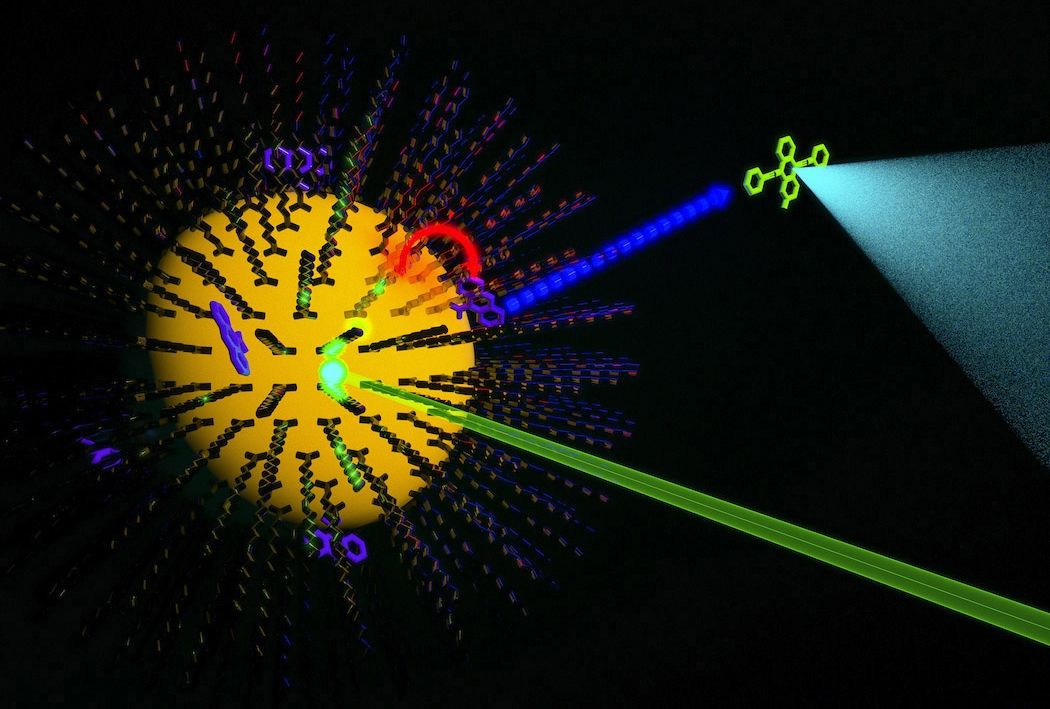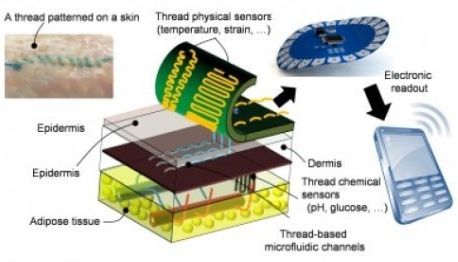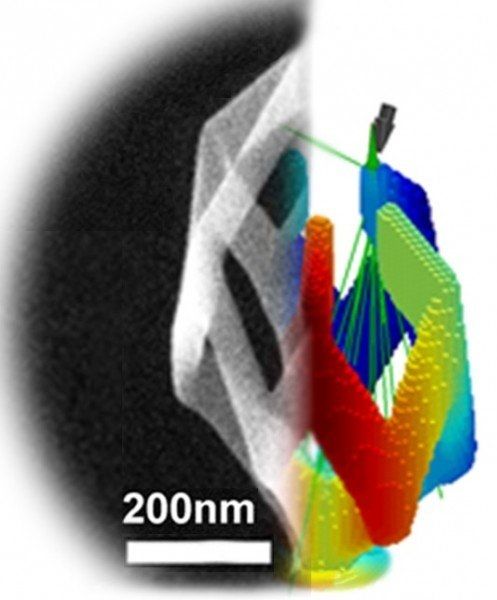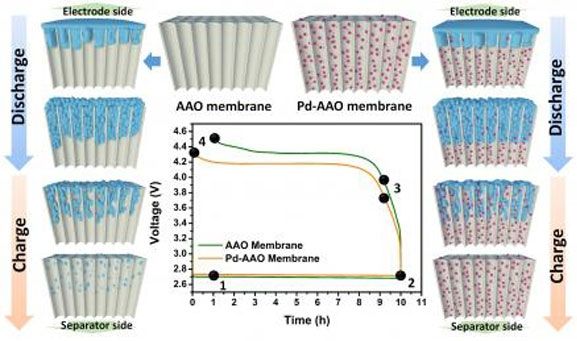Archive for the ‘chemistry’ category: Page 296
Jul 26, 2016
Welcome to Lab 2.0 Where Computers Replace Experimental Science
Posted by Karen Hurst in categories: chemistry, computing, mobile phones, physics, science, solar power, sustainability

We spend our lives surrounded by high-tech materials and chemicals that make our batteries, solar cells and mobile phones work. But developing new technologies requires time-consuming, expensive and even dangerous experiments.
Luckily we now have a secret weapon that allows us to save time, money and risk by avoiding some of these experiments: computers.
Continue reading “Welcome to Lab 2.0 Where Computers Replace Experimental Science” »
Jul 26, 2016
Quantum dot photosensitizers as a new paradigm for photochemical activation
Posted by Karen Hurst in categories: chemistry, quantum physics, solar power, sustainability
Interesting work on solar energy and Q-dot photosensitizers.
Interfacial triplet-triplet energy transfer is used to significantly extend the exciton lifetime of cadmium selenide nanocrystals in an experimental demonstration of their molecular-like photochemistry.
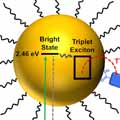
Continue reading “Quantum dot photosensitizers as a new paradigm for photochemical activation” »
Jul 19, 2016
Quantum computers show potential to revolutionize chemistry
Posted by Karen Hurst in categories: chemistry, neuroscience, quantum physics, robotics/AI, solar power, supercomputing, sustainability
Like this feature on QC.
If you have trouble wrapping your mind around quantum physics, don’t worry — it’s even hard for supercomputers. The solution, according to researchers from Google, Harvard, Lawrence Berkeley National Laboratories and others? Why, use a quantum computer, of course. The team accurately predicted chemical reaction rates using a supercooled quantum circuit, a result that could lead to improved solar cells, batteries, flexible electronics and much more.
Chemical reactions are inherently quantum themselves — the team actually used a quote from Richard Feynman saying “nature isn’t classical, dammit.” The problem is that “molecular systems form highly entangled quantum superposition states, which require many classical computing resources in order to represent sufficiently high precision,” according to the Google Research blog. Computing the lowest energy state for propane, a relatively simple molecule, takes around ten days, for instance. That figure is required in order to get the reaction rate.
Continue reading “Quantum computers show potential to revolutionize chemistry” »
Jul 18, 2016
Profusa to Showcase Tissue-integrated Sensors for Long-term Continuous Monitoring of Body Chemistry at the Pioneers Festival in Vienna
Posted by Klaus Baldauf in categories: biotech/medical, business, chemistry, health, mobile phones
Lumee™ tissue-O2 monitoring system slated to be available this year in Europe
SOUTH SAN FRANCISCO, Calif., May 16, 2016 — Profusa, Inc. announced today that it was selected by Pioneers, the global business relationship builder, to showcase the company’s “wear-and-forget” Lumee™ biosensor technology at the Pioneers Festival held at the prestigious Hofburg Imperial Palace in Vienna, Austria, May 24th-25th.
Making health and disease monitoring as easy as turning on your smart phone, the company’s tissue-integrated sensors for long-term, continuous tracking of body chemistry will be highlighted by Ben Hwang, Profusa’s chairman and chief executive officer, in a talk entitled, “Beyond Fitness Trackers: Let Your Body Speak.”
Jul 18, 2016
‘Smart’ thread collects diagnostic data when sutured into tissue
Posted by Karen Hurst in categories: biotech/medical, chemistry, computing, health, mobile phones, nanotechnology, wearables
Way cool! Your stitches monitors and reports your progress to your doctor/s.
BTW — In 1999, I told a guy from Diamond Intl. that the thread in our clothing would be able to do this in the next 15 to 20 years. He laughed at me; never say never.
For the first time, researchers led by Tufts University engineers have integrated nano-scale sensors, electronics and microfluidics into threads — ranging from simple cotton to sophisticated synthetics — that can be sutured through multiple layers of tissue to gather diagnostic data wirelessly in real time, according to a paper published online July 18 in Microsystems & Nanoengineering. The research suggests that the thread-based diagnostic platform could be an effective substrate for a new generation of implantable diagnostic devices and smart wearable systems.
Continue reading “‘Smart’ thread collects diagnostic data when sutured into tissue” »
Jul 16, 2016
DARPA Invests $7.5 Million for Implantable Biosensor that are 3 millimeters long and 500 microns in diameter
Posted by Klaus Baldauf in categories: chemistry, health, internet, military

Profusa (South San Francisco, CA) has won a $7.5 million grant from the Defense Advanced Research Projects Agency (DARPA) and the U.S. Army Research Office for further development of its tissue integrated biosensor technology, the company said Tuesday.
The U.S. military sees value in the technology improving mission efficiency through real-time monitoring of combat soldier health status.
Jul 16, 2016
Silicon Valley Entrepreneurs Aim To ‘Hack’ the Brain
Posted by Karen Hurst in categories: bioengineering, chemistry, cybercrime/malcode, neuroscience
Woo and other entrepreneurs are using fasts and other tricks to “hack” their brain chemistry like they would a computer, hoping to give themselves an edge as they strive to dream up the next billion-dollar idea. Known by insiders as “biohacking,” the push for cognitive self-improvement is gaining momentum in the Silicon Valley tech world, where workers face constant pressure to innovate and produce at the highest levels.
Jul 12, 2016
Additive manufacturing techniques featuring atomic precision could one day create materials with Legos flexibility and Terminator toughness
Posted by Karen Hurst in categories: chemistry, particle physics, transportation
Great work by my friends at ORNL.
In a review paper published in ACS Nano, Olga Ovchinnikova and colleagues provide an overview of existing paths to 3D materials, but the ultimate goal is to create and customize material at the atomic scale. Material would be assembled atom by atom, much like children can use Legos to build a car or castle brick by brick. This concept, known as directed matter, could lead to virtually perfect materials and products because many limitations of conventional manufacturing techniques would be eliminated.
“Being able to assemble matter atom by atom in 3D will enable us to design materials that are stronger and lighter, more robust in extreme environments and provide economical solutions for energy, chemistry and informatics,” Ovchinnikova said.
Jul 12, 2016
A New Design Strategy for Better Lithium Oxygen Batteries
Posted by Karen Hurst in categories: chemistry, computing, transportation
Yale researchers have devised a method that brings marketable Li-O2 batteries closer to reality, improving both the batteries’ performance and the ability to study them.
In recent years, lithium-oxygen batteries have intrigued researchers with their potential. They can store at least two to three times the energy as lithium-ion batteries can, which are the current standard for consumer electronics, so laptops could theoretically run longer on a single charge and electric cars would drive farther.
But they’re not quite there yet. For now, Li-O2 batteries operate sluggishly and have short lives. Compounding matters, it’s hard to get a sense of how to fix that because figuring out the exact nature of their chemistry has proved tricky.
Continue reading “A New Design Strategy for Better Lithium Oxygen Batteries” »

